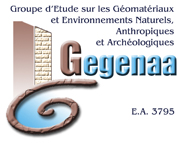Tooth wear as a means to quantify intra-specific variations in diet and chewing movements.
Résumé
In mammals, tooth function, and its efficiency, depends both on the mechanical properties of the foodand on chewing dynamics. These aspects have rarely been studied in combination and/or at the intraspecificlevel. Here we applied 3D dental surface texture analysis to a sample of field voles (Microtusagrestis) trapped from Finnish Lapland at different seasons and localities to test for inter-populationvariations. We also explored intra-individual variation in chewing dynamics by analysing two facetson the second upper molars. Our results confirm that the two localities have similar environments andthat the voles feed on the same items there. On the other hand, the texture data suggest that diets areseasonally variable, probably due to varying concentrations of abrasives. Lastly, the textures on thebuccal facets are more isotropic and their direction deviates more from the mesial chewing directionthan the lingual facets. We interpret these results as reflecting food, rather than chewing, movements,where food particles are more guided on the lingual side of the molars. This has implications for theapplication of dental microwear analysis to fossils: only homologous facets can be compared, evenwhen the molar row seems to constitute a functional unit.
Domaines
Biodiversité| Origine | Publication financée par une institution |
|---|

